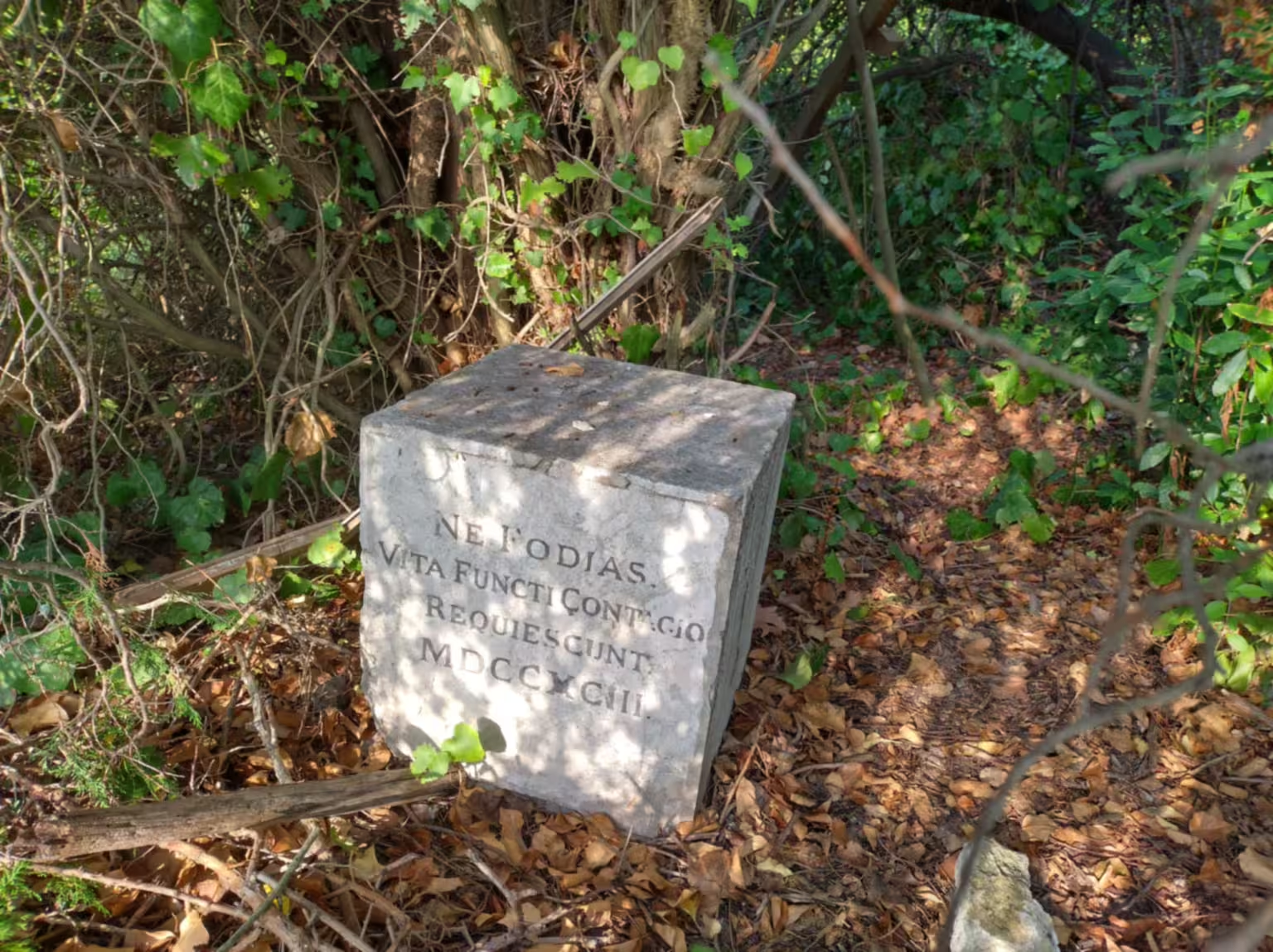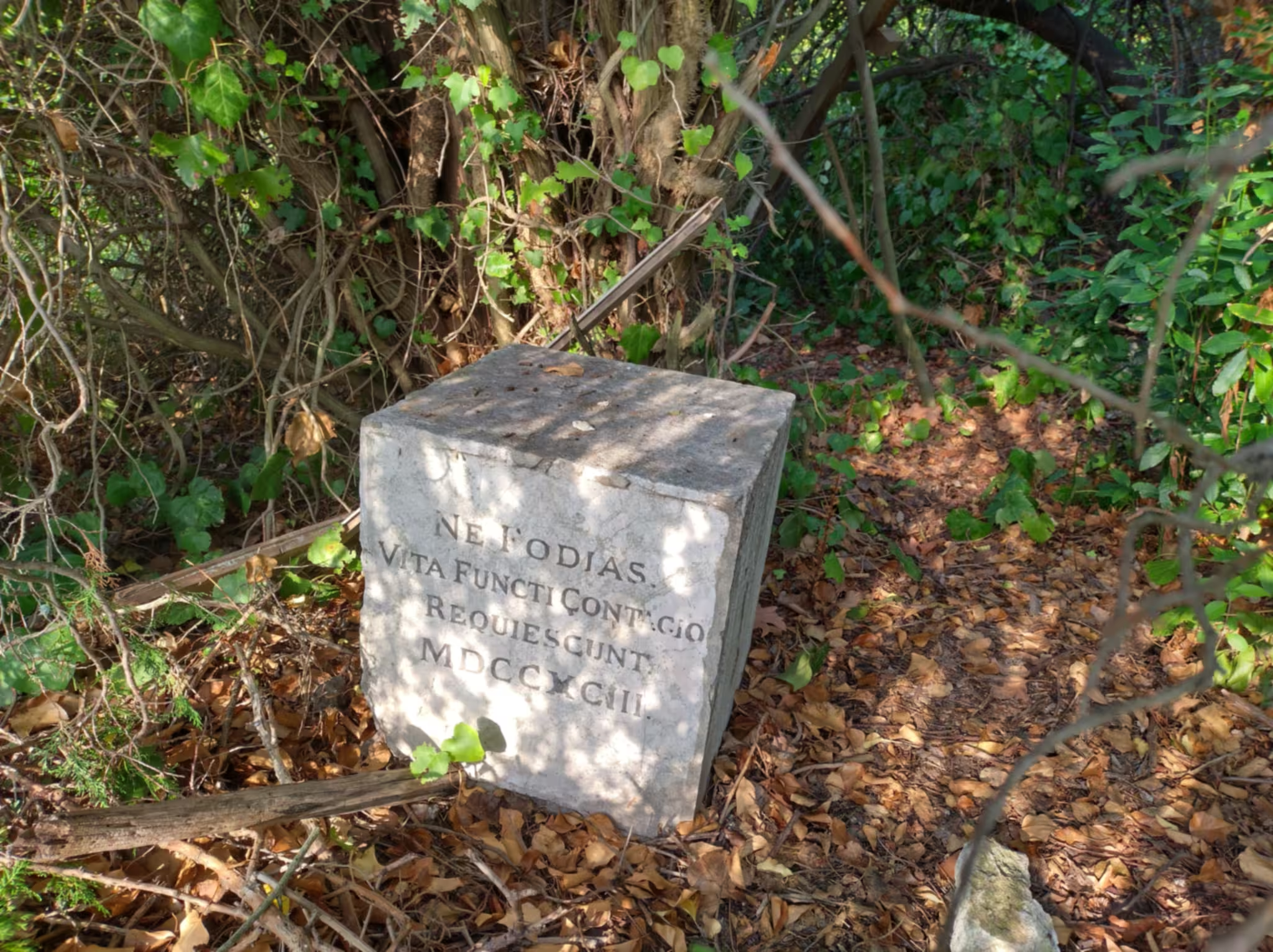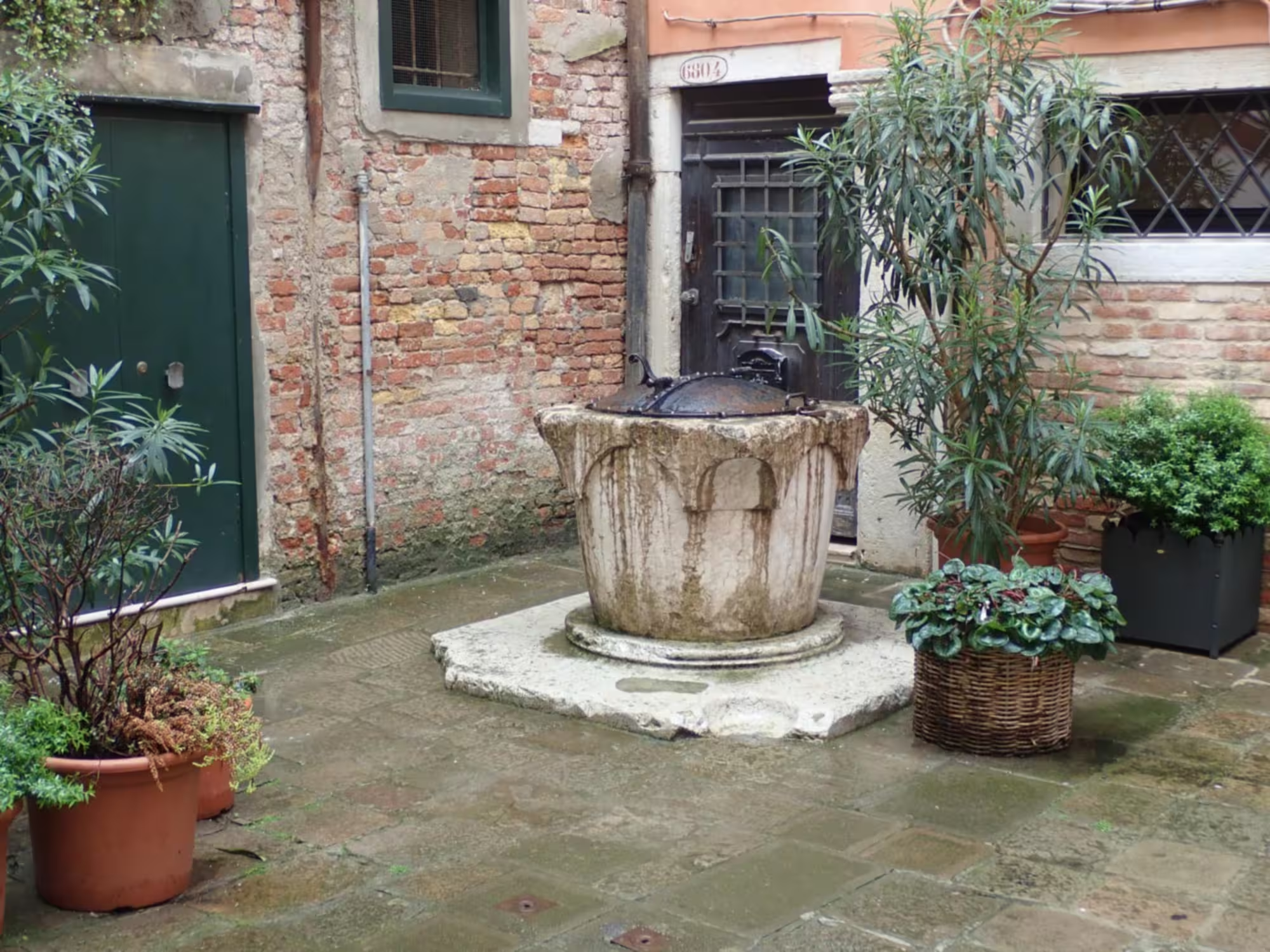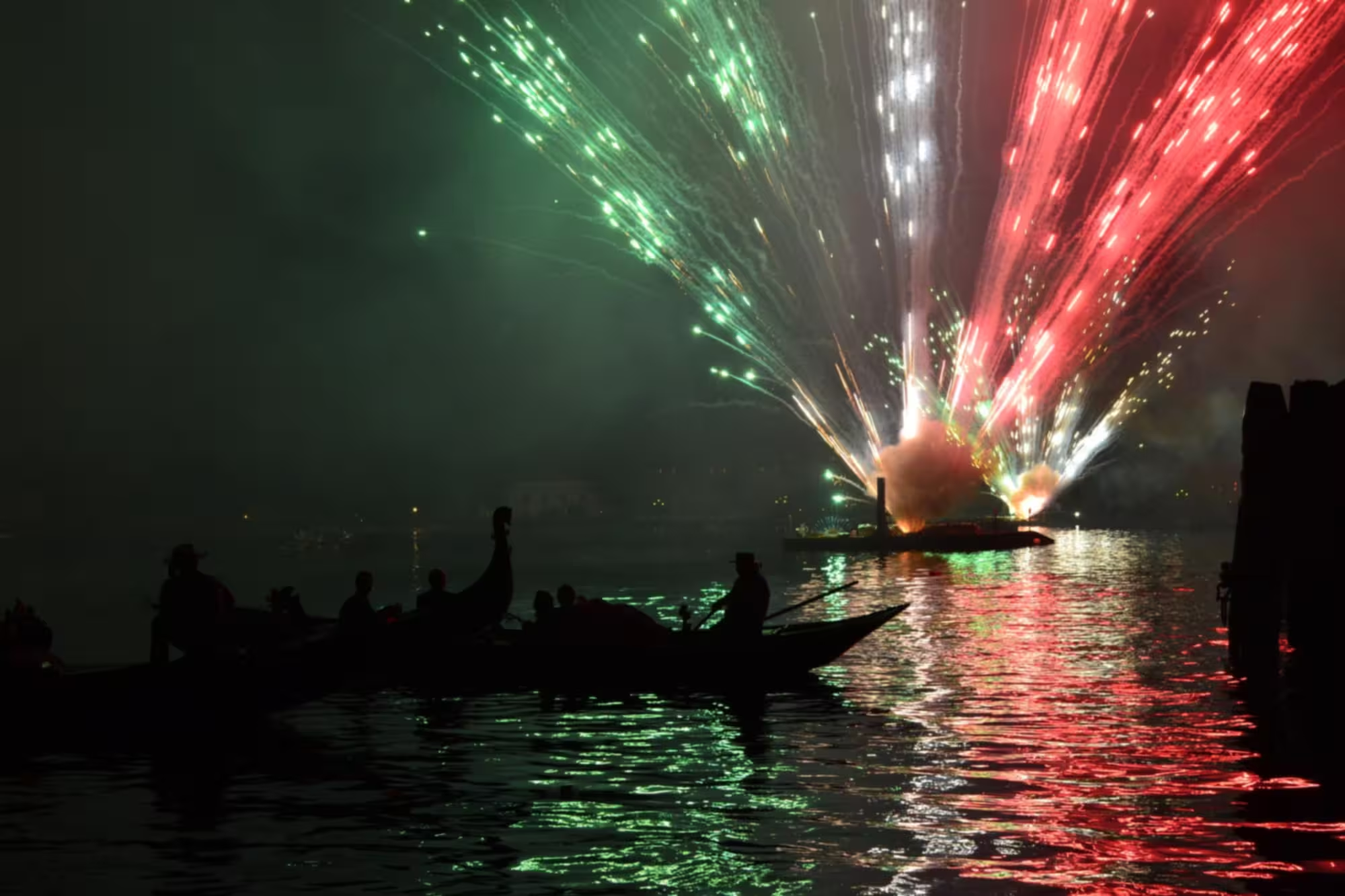Ne fodias
vita functi contagio
requescunt
MDCCXCIII
Do not disturb!
Those who in life were contagious
rest here.
1793
The warning on this stone from 1793 on the island of Poveglia shows how scared people were of the black plague before modern medicine and antibiotics.
The ship “San Nicolò”
On June 5th 1793 the ship “San Nicolò”, a small tartana sailing under Ottoman flag, arrived in the lagoon. It had set out from Nauplia in Greece with a cargo of some nine thousand salted cheeses destined for Venice and a crew of thirty men.
The harbour master allowed the ship to cast anchor in the canal close to Poveglia, which was also the last of the Venetian lazzaretti.
The following day some boats arrived from Venice to take away the cargo of cheese. The sailors and workers set up some chutes to unload the many cheeses, and the work proceeded until late evening.
The emergency
On June 8th workers at Poveglia found members of the crew of the San Nicolò in agony on board, shouting not to approach the ship.
First two sailors fell ill with the plague, and later four more. One died soon after.
The representative of the Magistrato alla Salute immediately ordered the harbour entrance to be closed, and all nearby ships to be moved away from the San Nicolò. Sailors in rowed boats kept watch day and night, so nobody could leave the San Nicolò.
The authorities also evacuated all the residents of Poveglia, except the inn-keeper who had to supply food.
Then the workers from Venice who had unloaded the ship, started falling ill too. They were all taken back to Poveglia, and the responsible engineer ordered three shelters constructed on the island: one for the sick, one for the suspected cases and one for the guardians.
The crisis lasted throughout July and August. The Senate of the Serenissima, the closest Venice had to a government, followed the crisis constantly, and praised its handling.
Nobody had forgot the plague epidemics of the past, 1575 and 1630, and to celebrate that Venice had avoided a repetition on October 15th masses, ringing of the bells and cannon shots marked the end of the emergency.
The burials
Twelve persons died in those frightening three months: four sailors and eight local workers.
The island already had a cemetery, but a new section was added for the plague victims. The earth was soaked in salt water before the burials, and a stone with a dire warning placed over it.

Bibliography
- Busato, Davide and Paola Sfameni. Poveglia : l’isola alle origini di Venezia. 2018. [more]





Leave a Reply